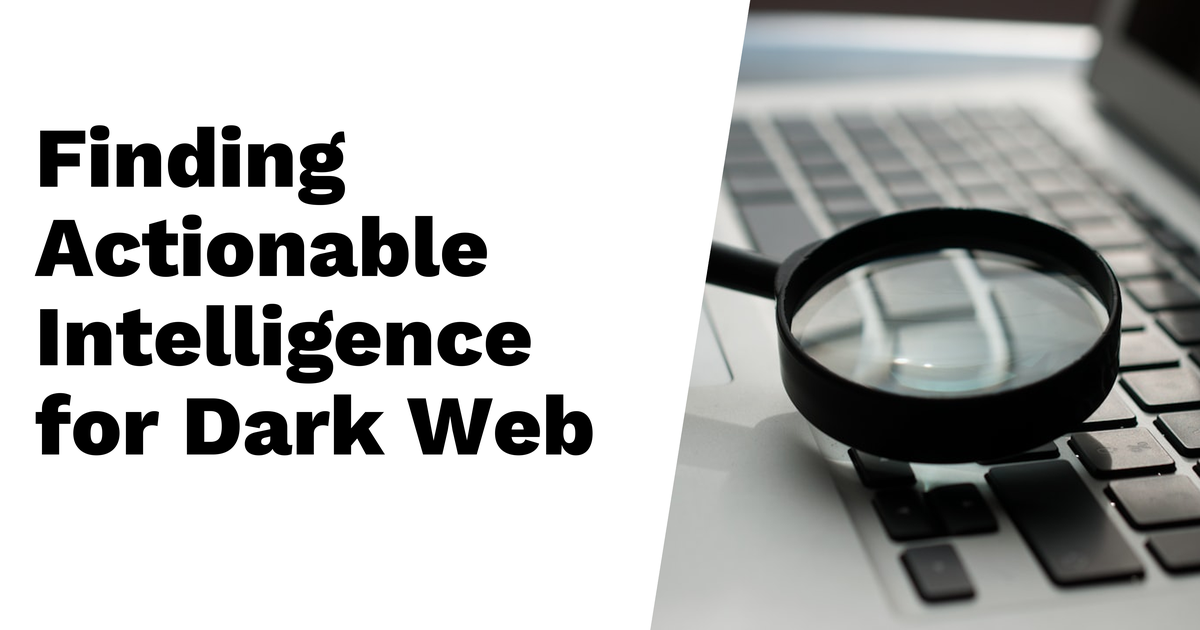Finding actionable intelligence for dark web investigations can be challenging, yet it’s critical for effective outcomes. According to a recent research report, key insights reveal various sources and methods to gather reliable information. This report discusses the hurdles faced by investigators in this underground realm and offers best practices to navigate those complexities. Source attribution is also highlighted as a vital element in ensuring accuracy and credibility of the findings. By utilizing these strategies, investigators can enhance their efforts and make more informed decisions based on comprehensive data analysis from the dark web’s often opaque environment.
Table of Contents
- Understanding Actionable Intelligence
- Challenges in Dark Web Investigations
- Best Practices for Gathering Intelligence
- Key Sources for Dark Web Data
- Attribution of Sources in Research
- Analyzing Collected Intelligence
- Frequently Asked Questions
Understanding Actionable Intelligence

Actionable intelligence refers to information that can be used to make informed decisions during investigations, especially in the dark web context. It plays a critical role in identifying potential threats, understanding criminal networks, and planning operational strategies. There are three main types of actionable intelligence: strategic, tactical, and operational. Strategic intelligence helps in long-term planning and policy-making, tactical intelligence aids in immediate decision-making for specific operations, and operational intelligence focuses on the practical execution of tasks on the ground.
Key characteristics of actionable intelligence include relevance and timeliness. Information must be pertinent to the situation at hand and delivered promptly to be effective. The transformation of raw data into actionable intelligence involves several steps, including data collection, analysis, and reporting. For instance, law enforcement agencies often rely on this process to uncover illicit activities and respond effectively.
In real-world applications, actionable intelligence has proven invaluable for law enforcement. For example, when investigating drug trafficking on the dark web, agencies have used gathered intelligence to dismantle networks and arrest key players. Clarity and precision in intelligence reports are essential; unclear information can lead to misinterpretations and poor decision-making.
Actionable intelligence significantly enhances decision-making by providing a clear understanding of threats and opportunities. Technology plays a crucial role in this process, with various tools and software designed to facilitate data gathering and analysis. Popular tools include threat intelligence platforms and analytical software that streamline the management of actionable intelligence.
Looking ahead, future trends in actionable intelligence, particularly in cyber investigations, suggest an increased integration of artificial intelligence and machine learning. These technologies can improve the speed and accuracy of intelligence analysis, making it easier to detect patterns and predict criminal behavior.
Challenges in Dark Web Investigations
Investigating the dark web presents numerous challenges due to the inherent anonymity of its users. This anonymity complicates efforts to track actions and identify individuals involved in illicit activities. Furthermore, the dark web hosts a myriad of platforms, each with its own unique structure and content, making it difficult for investigators to navigate and gather useful information. The quality and reliability of data sourced from these platforms can be highly variable, which adds another layer of difficulty in discerning credible threats from merely misleading information.
Legal and ethical dilemmas arise frequently in dark web investigations. Investigators must balance the need for thoroughness with the potential for infringing on privacy rights, leading to complex decisions about the methods employed in these inquiries. Additionally, criminals on the dark web are constantly adapting, utilizing rapidly evolving technologies and tactics that outpace standard investigative techniques. This cat-and-mouse game further complicates the task of law enforcement and cybersecurity professionals.
Access to certain areas of the dark web is often restricted, limiting the ability of investigators to fully understand the scope of criminal activities. Resource limitations, both in terms of time and funding, frequently hinder thorough investigations, forcing teams to prioritize certain leads over others. Specialized skills and training are essential for those attempting to penetrate this clandestine world, yet not all agencies have the necessary expertise readily available.
Finally, collaboration across jurisdictions and agencies can be fraught with challenges. Differences in laws, regulations, and communication practices can impede effective cooperation, ultimately making it harder to mount a unified response to dark web threats. Each of these challenges underscores the complexity of conducting dark web investigations and highlights the need for ongoing research and development of best practices.
- Anonymity of users and its impact on tracking actions
- Diverse platforms on the dark web complicating investigations
- Variability in data quality and reliability from sources
- Legal and ethical dilemmas when investigating the dark web
- Rapidly evolving technologies and tactics used by criminals
- Limited access to certain dark web areas for investigators
- The challenge of distinguishing between genuine threats and misinformation
- Resource limitations in terms of time and funding for investigations
- The necessity for specialized skills and training among investigators
- Collaborative challenges across jurisdictions and agencies
Best Practices for Gathering Intelligence

Before diving into dark web investigations, it is crucial to establish clear objectives. Defining what you want to achieve helps narrow your focus and guides your data collection efforts. Using a multi-faceted approach is also key; combine various data sources, such as forums, marketplaces, and social media, to build a comprehensive picture. It’s important to verify the data through multiple sources to ensure its accuracy and reliability, as misinformation can lead to faulty conclusions.
Meticulous record-keeping during the investigation process is vital. Document every step taken, including the sources consulted and methods used. This not only aids in tracking progress but also provides a clear audit trail for future reference. Advanced search techniques can significantly enhance your capabilities. Utilize tools designed specifically for the dark web, which can help uncover hidden information and streamline the search process.
Implementing cybersecurity measures is essential to protect your investigation team from potential threats. This includes using secure networks and anonymizing tools to safeguard identities and data. Regularly updating methodologies ensures that your practices stay current with the ever-evolving digital landscape. Engaging with experts and informants can provide deeper insights, as they often have firsthand experience or knowledge that can guide your investigation.
Training personnel on the latest tools and techniques is equally important. Investing in continuous education helps your team stay sharp and effective. Lastly, always adhere to legal guidelines and privacy considerations during investigations. Respecting these boundaries not only protects individuals but also enhances the credibility of your findings.
| Best Practice | Description |
|---|---|
| Establishing clear objectives before starting an investigation | Defining specific goals to guide the intelligence-gathering process. |
| Using a multi-faceted approach to data collection | Employing various methods and sources to enrich information. |
| Ensuring data verification through multiple sources | Cross-referencing information to confirm accuracy. |
| Maintaining meticulous records during the investigation process | Keeping detailed documentation of all steps taken. |
| Utilizing advanced search techniques on the dark web | Applying specialized methods for gathering information from hidden sources. |
| Implementing cybersecurity measures to protect investigation teams | Safeguarding personnel and data throughout the investigation. |
| Regularly updating methodologies to keep pace with changes | Adapting strategies based on new developments in the dark web. |
| Engaging with experts and informants for deeper insights | Collaborating with knowledgeable individuals for enhanced understanding. |
| Training personnel on the latest tools and techniques | Ensuring team members are equipped with current skills and knowledge. |
| Adhering to legal guidelines and privacy considerations during investigations | Following regulations to maintain ethical standards throughout processes. |
Key Sources for Dark Web Data
Forums and marketplaces serve as primary sources for gathering dark web data. These platforms host discussions, transactions, and exchanges of information that can yield valuable insights into illicit activities. Utilizing darknet search engines like Ahmia or Grams can aid in efficiently retrieving specific information hidden within the dark web’s depths. Additionally, monitoring social media platforms for conversations related to the dark web can uncover emerging trends or threats, as users often share experiences or insights there.
Analyzing cryptocurrency transactions is also crucial for financial intelligence. Tracking the flow of funds can reveal connections between different entities and help identify potential illegal activities. Engaging with threat intelligence platforms can further enhance investigations, providing curated data and alerts on threats emerging from the dark web.
Leveraging government and law enforcement databases can offer access to valuable reports and statistics regarding dark web activities. Incorporating open-source intelligence (OSINT) into investigations allows for a broader perspective, as many public sources can provide context or corroborate findings.
Additionally, academic research and publications on dark web trends can shed light on evolving patterns and behaviors. Collaborating with cybersecurity firms can provide technical insights, tools, and methodologies to streamline investigations. Lastly, reviewing leaked data from past breaches helps identify patterns that may be relevant, offering clues into current dark web dynamics.
Attribution of Sources in Research
In dark web investigations, understanding the credibility of your sources is crucial. Reliable information can make the difference between a successful investigation and a misleading one. Start by verifying the authenticity of your sources using methods such as checking for recent publications, author qualifications, and the reputation of the publishing platform. It’s also essential to track your source material through proper citation methods, which can help you locate the original content easily when needed.
Peer review plays a significant role in validating research findings, especially when dealing with complex data from the dark web. Research that has undergone peer review is often more trustworthy since it has been evaluated by experts in the field. Establishing a chain of evidence for the information you use is another key practice; this means documenting how you arrived at your conclusions and the sources that led you there.
Differentiate between primary and secondary sources, as primary sources, like firsthand accounts or original data, provide more direct evidence than secondary sources, which interpret or analyze those primary materials. Always assess the bias in your sources and be aware of potential conflicts of interest, as these factors can distort information.
Consistency in documenting your sources is vital for transparency, allowing others to follow your research trail. Engaging in cross-referencing can further confirm the information you gather, ensuring that it holds up against multiple sources. Finally, consider utilizing tools for managing and organizing your sources effectively; software that helps catalog your findings can streamline your research process and make it easier to present your conclusions.
Analyzing Collected Intelligence
A systematic approach to data analysis is crucial in dark web investigations. Start by organizing collected intelligence into manageable segments, which makes it easier to identify patterns and trends. Analytical tools, such as data visualization software and statistical analysis programs, can help interpret complex data sets. For instance, using network analysis tools can reveal connections between different entities on the dark web, highlighting relationships that may not be immediately obvious.
Contextualizing data is essential to extract meaning from your findings. For example, understanding the broader context of a threat actor’s activity can provide insights into their motivations and potential targets. This can involve researching historical data, related incidents, and current events that might affect their behavior.
Creating visual representations of data enhances clarity and aids in communication. Charts, graphs, and heat maps can make complex information more digestible for team members and stakeholders. Engaging in collaborative analysis allows for multiple perspectives to enrich the understanding of the data. Team brainstorming sessions can lead to new insights and challenge assumptions that may cloud judgment.
Critical thinking plays a vital role in analyzing data. Always question the validity of your assumptions and consider alternative explanations for the data you observe. Regularly reviewing and updating your analyses is also essential, as new data can shift the narrative or reveal overlooked details. From these analyses, generate actionable recommendations that can guide future investigations or operational decisions.
Finally, documenting the analysis process is important for future reference. This not only helps in maintaining a clear record of your findings but also allows for easier updates and revisions as new intelligence becomes available.
Frequently Asked Questions
What is actionable intelligence in the context of the dark web?
Actionable intelligence refers to useful information gathered from the dark web that can help in investigations and decision making. It often focuses on identifying threats, stolen data, or malicious activities.
How can I access the dark web safely for research purposes?
To access the dark web safely, you need a secure internet connection, a VPN for privacy, and the Tor browser. Additionally, it’s crucial to practice caution and avoid engaging in illegal activities.
What types of information can I find on the dark web that might be useful for investigations?
On the dark web, you can find various types of information including stolen data, hacked accounts, illegal drug sales, and even forums where cybercriminals share tactics or collaborate.
Are there specific tools or resources recommended for gathering intelligence from the dark web?
Yes, there are several tools available for dark web investigations. Popular options include specialized search engines for the dark web, digital forensic tools, and monitoring services that alert you to potential breaches.
How can I ensure the information I find on the dark web is credible?
To ensure credibility, it’s important to cross-reference information from multiple sources, verify claims through reputable channels, and be cautious about whom you trust, as misinformation is common on the dark web.
TL;DR This blog post explores actionable intelligence in dark web investigations, discussing the challenges faced, best practices for intelligence gathering, and key data sources. It emphasizes the importance of attributing sources in research and provides guidance on analyzing collected intelligence.





